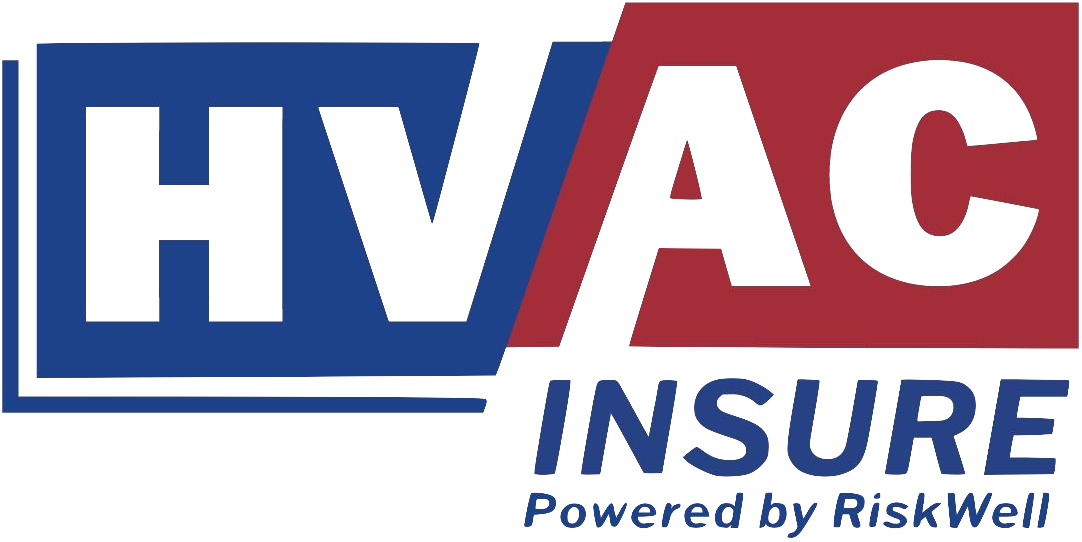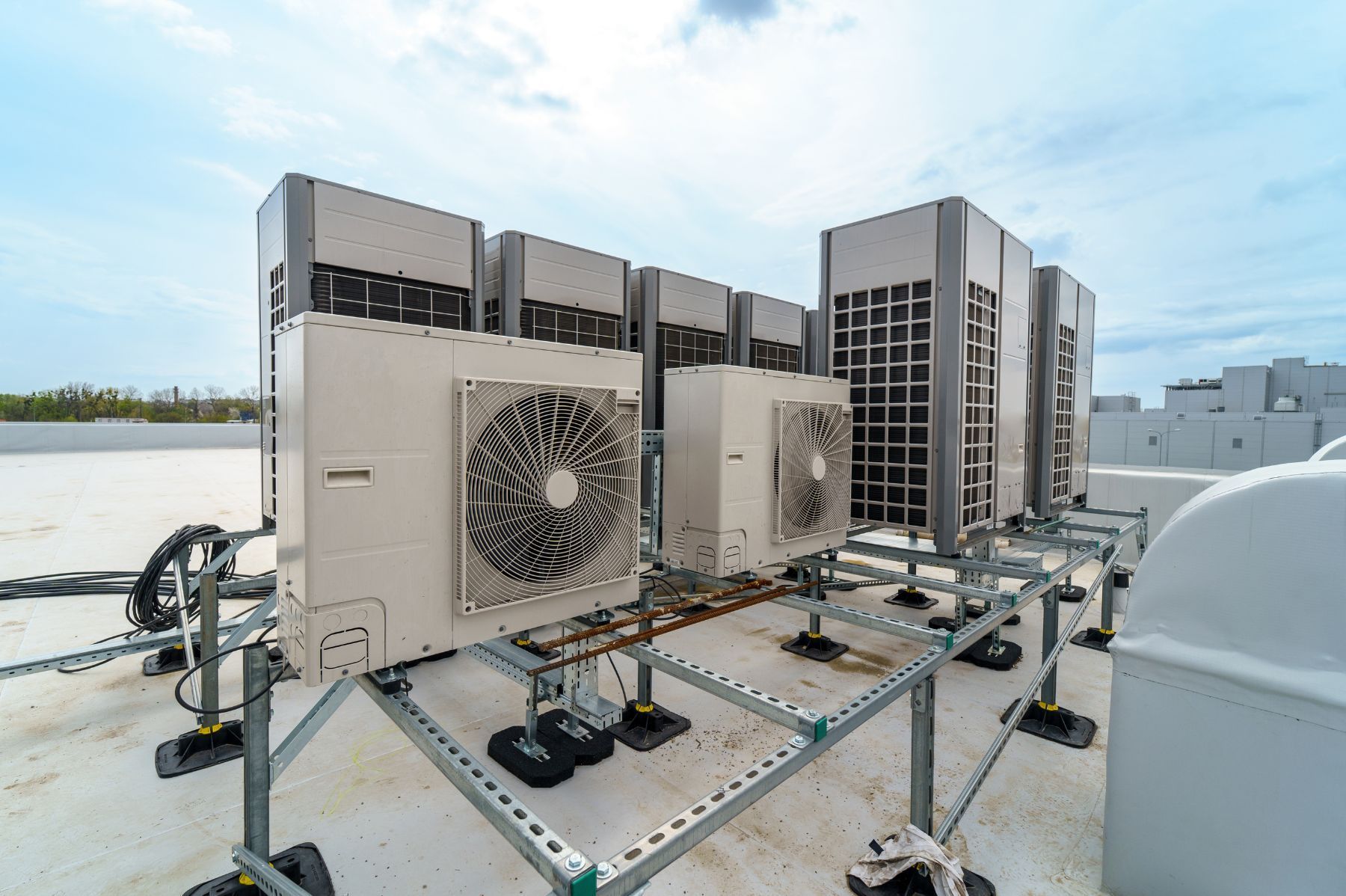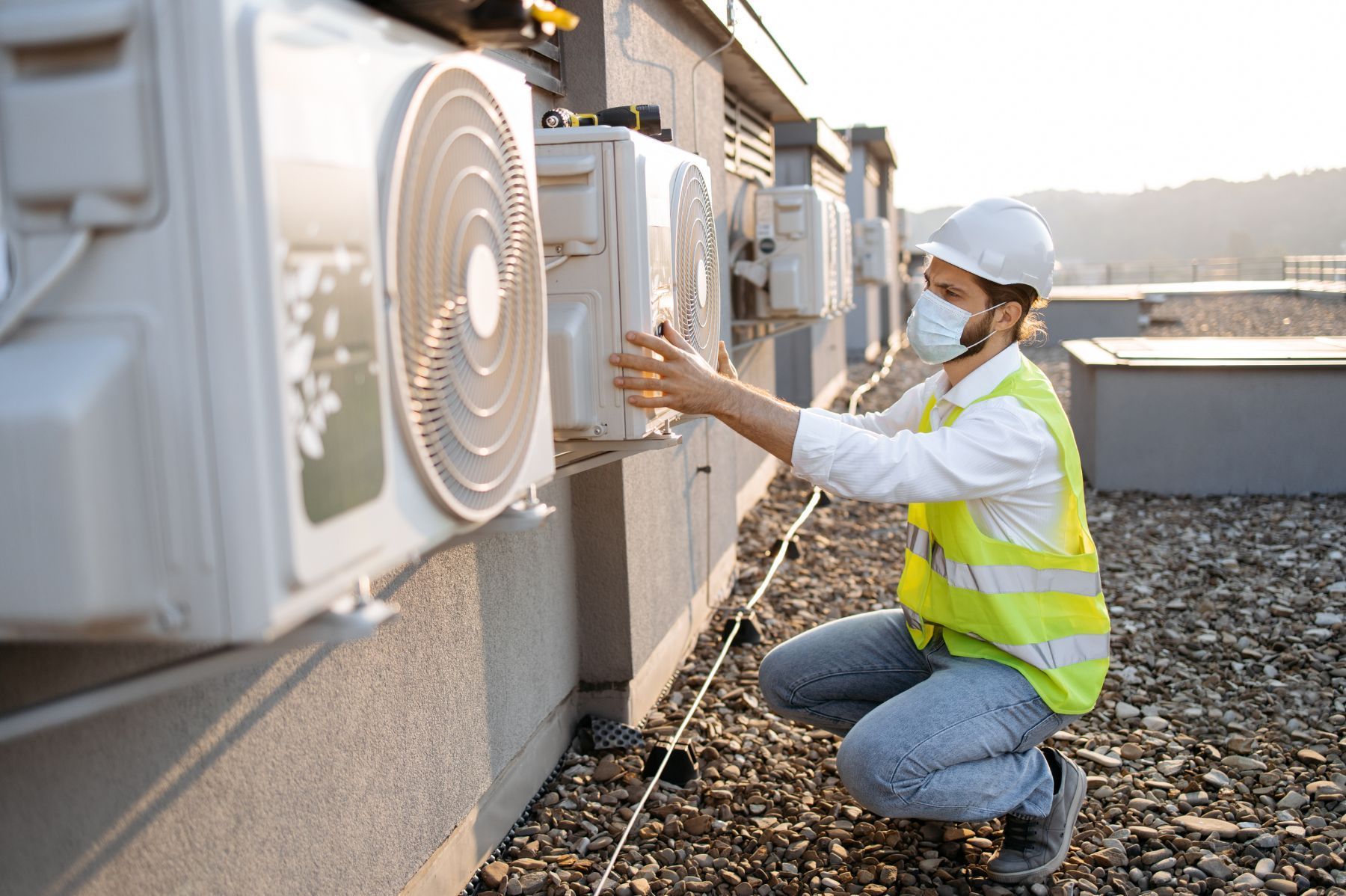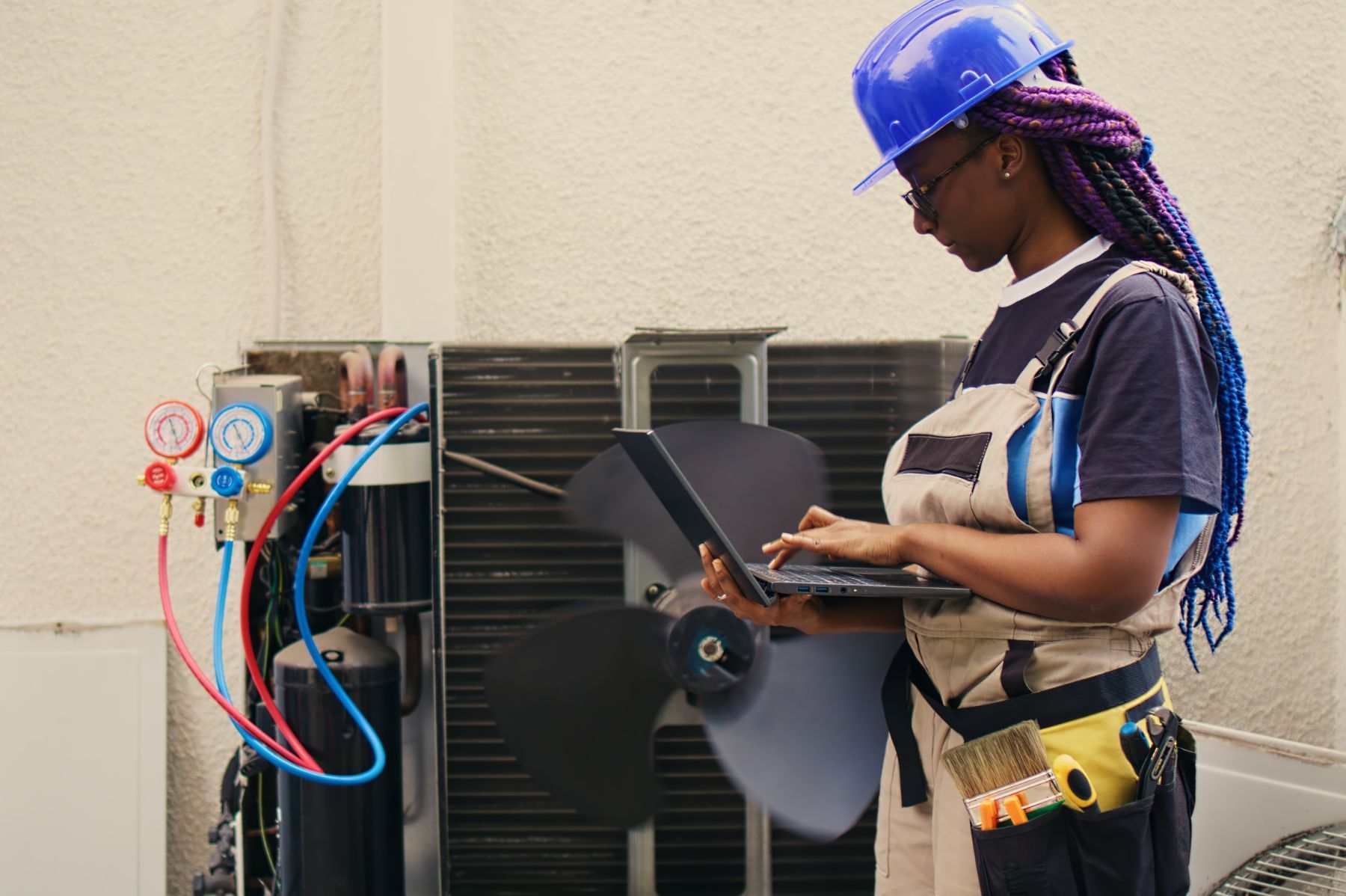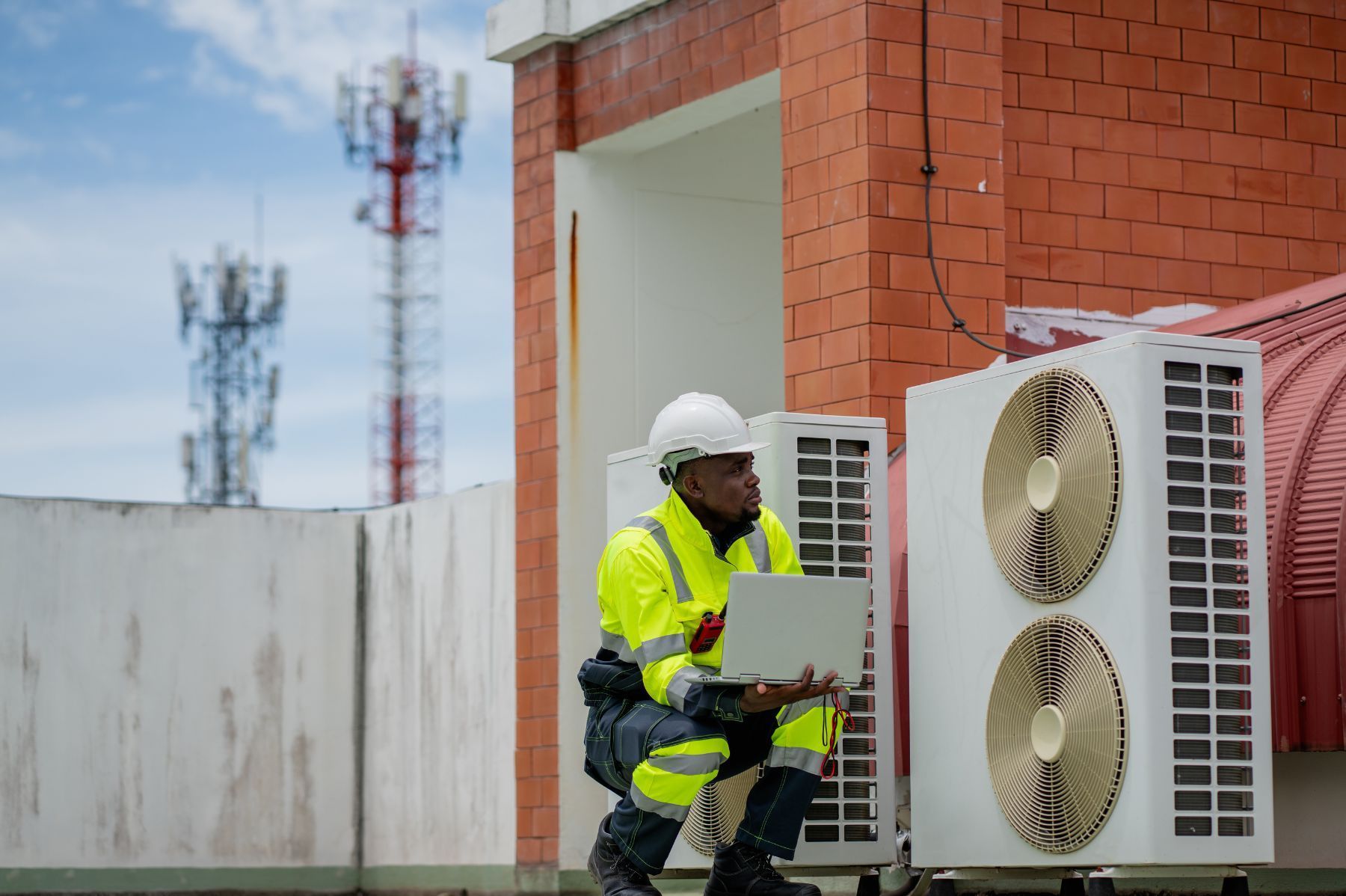Common OSHA Violations in HVAC and How to Avoid Them
See How We're Different
or call us: (469) 678-8001

Working in the HVAC industry means regularly facing safety challenges that can lead to serious injuries or costly penalties. The Occupational Safety and Health Administration (OSHA) keeps a close eye on these hazards, issuing citations that often highlight recurring issues. For HVAC contractors, understanding the most common OSHA violations is crucial-not just to avoid fines but to protect workers and maintain smooth operations. In fiscal year 2024 alone, OSHA issued 2,681 citations for ladder violations, accumulating $9.5 million in penalties, a clear signal that ladder safety remains a top concern according to HVACInsure.
This article breaks down the frequent OSHA violations in the HVAC sector, explains why they happen, and offers practical steps to prevent them. Whether you manage a small crew or oversee a large operation, these insights will help you stay compliant and keep your team safe.
Fall Protection: The Leading Cause of Citations
Falls are the most cited OSHA violation in construction-related fields, including HVAC. In fiscal year 2023, fall protection violations led to 7,271 citations, making it the single largest category of OSHA enforcement actions according to the Environmental Resource Center. Many HVAC tasks involve working at heights on rooftops, ladders, or scaffolding, which increases the risk of falls.
Common fall protection issues include missing guardrails, inadequate personal fall arrest systems, and lack of proper training. Even when equipment is available, improper use or failure to inspect gear regularly can lead to violations. The consequences of these oversights can be severe, not only resulting in injuries and fatalities but also leading to costly fines and legal repercussions for employers. The financial burden of workplace accidents can be staggering, with the average cost of a fall-related injury estimated to be over $40,000, not including potential litigation costs and increased insurance premiums.
To avoid these pitfalls, HVAC employers should implement a comprehensive fall protection program. This includes providing the right equipment, ensuring regular inspections, and most importantly, training workers thoroughly on fall hazards and safe practices. Fall protection training violations themselves accounted for 2,112 citations in 2023, highlighting that knowledge gaps remain a significant problem. Additionally, fostering a culture of safety within the organization can empower employees to take ownership of their safety and that of their coworkers. Encouraging open communication about safety concerns and providing a platform for workers to report hazards can significantly enhance the effectiveness of fall protection measures.
Best Practices for Fall Protection in HVAC
Start by assessing all job sites for fall hazards. Use guardrails or safety nets where possible, and require harnesses and lanyards when working on elevated surfaces. Conduct hands-on training sessions that cover equipment use, hazard recognition, and emergency procedures. Regular refresher courses can reinforce safe habits and reduce violations. Moreover, it is essential to keep up with the latest OSHA regulations and industry standards, as these can evolve over time. Staying informed about new safety technologies and practices can also provide HVAC companies with innovative solutions to enhance worker safety. For example, utilizing drones for inspections can minimize the need for workers to access high-risk areas, thereby reducing the likelihood of falls.
Ladder and Scaffolding Safety: Persistent Challenges
Ladders and scaffolding are essential tools in HVAC work but also major sources of OSHA citations. In 2024, OSHA issued 2,681 citations for ladder violations and 1,835 for scaffolding violations, with penalties totaling over $16 million combined according to HVACInsure. These figures confirm that improper ladder and scaffolding use remains a costly issue.
Common ladder violations include using damaged or unstable ladders, incorrect ladder angle, and failing to secure ladders properly. For scaffolding, violations often involve lack of guardrails, improper assembly, and inadequate access points. These hazards not only risk worker injury but also attract significant fines. The consequences of these violations can extend beyond financial penalties, as they can lead to serious injuries or even fatalities, underscoring the importance of rigorous adherence to safety standards in the workplace.
Maintaining ladder and scaffolding safety starts with selecting the right equipment for the job and inspecting it daily. Training workers on proper setup, use, and dismantling procedures is equally critical. Supervisors should enforce safety protocols and conduct routine site audits to catch potential issues early. Additionally, fostering a culture of safety within the organization can empower workers to speak up about unsafe practices or equipment, creating an environment where safety is prioritized and valued.
How to Keep Ladder and Scaffolding Work Safe
Ensure ladders are rated for the intended load and free from defects. Position ladders at the correct angle—approximately 75 degrees—and secure them to prevent movement. For scaffolding, follow manufacturer guidelines strictly and verify that guardrails and toeboards are in place. Provide clear access routes and never overload scaffolds beyond their capacity. Furthermore, it is beneficial to implement a buddy system where workers can look out for one another, enhancing safety awareness and reducing the likelihood of accidents. Regular safety meetings can also serve as a platform for discussing recent incidents or near misses, allowing teams to learn from each other’s experiences and reinforce the importance of vigilance on the job site.
Eye and Face Protection: Overlooked but Essential
Eye and face protection violations are another frequent OSHA citation in HVAC work. In fiscal year 2024, over 2,000 citations were issued for inadequate eye and face protection, resulting in $7 million in penalties according to HVACInsure. These violations often stem from workers not wearing the proper goggles, face shields, or safety glasses when exposed to flying debris, chemical splashes, or sparks.
Many HVAC tasks involve grinding, cutting, soldering, or working with refrigerants that can cause serious eye injuries. Employers must provide appropriate protective gear and enforce its use consistently. The importance of this protective equipment cannot be overstated; even a momentary lapse in eye and face protection can result in irreversible damage, leading to long-term health issues and significant medical costs. Moreover, the psychological impact of an eye injury can be profound, affecting not just the injured worker but also their colleagues and family members.
Regular training on when and how to use eye and face protection can reduce these violations. Additionally, inspecting protective equipment for damage and replacing worn-out gear helps maintain safety standards. It’s also essential to foster a workplace culture that prioritizes safety, where employees feel empowered to speak up about unsafe practices and remind their peers about the importance of protective gear. This proactive approach can lead to a more vigilant workforce that values their health and safety on the job.
Choosing the Right Eye and Face Protection
Select protective gear based on the specific hazards present. For example, safety glasses with side shields are suitable for general tasks, while face shields may be necessary for grinding or chemical handling. Ensure all equipment meets ANSI standards and fits comfortably to encourage consistent use. Additionally, consider the environmental conditions in which the work will take place; for instance, anti-fog coatings can be beneficial in humid environments, while tinted lenses may be necessary for tasks involving bright lights or intense glare. Understanding the nuances of different protective gear can significantly enhance worker safety and comfort.
Furthermore, it’s crucial to involve employees in the selection process of their protective equipment. Engaging workers in discussions about their experiences with various types of eye and face protection can lead to better choices that suit their specific needs and preferences. This collaborative approach not only boosts morale but also ensures that the protective gear provided is practical and effective for the tasks at hand. By prioritizing both safety and comfort, employers can create a more productive work environment where employees are less likely to neglect their protective equipment.
Respiratory Protection: Guarding Against Invisible Hazards
Respiratory protection remains a significant concern in HVAC work. In fiscal year 2023, OSHA issued 2,481 citations related to respiratory protection violations, underscoring the risks of exposure to dust, fumes, and chemicals according to Environmental Health & Safety.
Many HVAC jobs involve working in confined spaces or around hazardous substances such as refrigerants and insulation fibers. Without proper respiratory protection, workers face long-term health risks including lung disease and chemical exposure. The cumulative effects of these exposures can lead to chronic conditions that not only affect the quality of life for workers but can also result in significant healthcare costs and lost productivity for employers.
Employers must provide suitable respirators, ensure proper fit testing, and train workers on correct use and maintenance. Failure to do so not only risks employee health but also leads to costly OSHA citations. Moreover, the financial implications extend beyond fines; companies may also experience increased insurance premiums and potential lawsuits from affected employees, which can have a lasting impact on their operations.
Implementing an Effective Respiratory Protection Program
Start by conducting a hazard assessment to identify respiratory risks. Provide respirators that match the hazard level, from simple dust masks to full-face respirators. Fit testing should be mandatory for all users to guarantee a proper seal. Train workers on donning, doffing, cleaning, and storing respirators correctly. Regular program reviews help address any gaps and keep workers safe. Additionally, it is essential to foster a culture of safety within the workplace, encouraging employees to report any discomfort or issues with their respiratory protection equipment without fear of retribution.
Furthermore, integrating technology into respiratory protection programs can enhance safety measures. For instance, utilizing digital platforms for tracking training sessions, fit testing results, and equipment maintenance schedules can streamline compliance efforts. Wearable technology that monitors air quality in real-time can also provide workers with immediate feedback about their environment, allowing them to take proactive measures if hazardous conditions arise. By embracing these innovations, employers can not only comply with regulations but also demonstrate a commitment to the health and well-being of their workforce.
Respiratory Protection: Guarding Against Invisible Hazards
Respiratory protection remains a significant concern in HVAC work. In fiscal year 2023, OSHA issued 2,481 citations related to respiratory protection violations, underscoring the risks of exposure to dust, fumes, and chemicals according to Environmental Health & Safety.
- Many HVAC jobs involve working in confined spaces or around hazardous substances such as refrigerants and insulation fibers. Without proper respiratory protection, workers face long-term health risks including lung disease and chemical exposure. The cumulative effects of these exposures can lead to chronic conditions that not only affect the quality of life for workers but can also result in significant healthcare costs and lost productivity for employers.
Employers must provide suitable respirators, ensure proper fit testing, and train workers on correct use and maintenance. Failure to do so not only risks employee health but also leads to costly OSHA citations. Moreover, the financial implications extend beyond fines; companies may also experience increased insurance premiums and potential lawsuits from affected employees, which can have a lasting impact on their operations.
Implementing an Effective Respiratory Protection Program
Start by conducting a hazard assessment to identify respiratory risks. Provide respirators that match the hazard level, from simple dust masks to full-face respirators. Fit testing should be mandatory for all users to guarantee a proper seal. Train workers on donning, doffing, cleaning, and storing respirators correctly. Regular program reviews help address any gaps and keep workers safe. Additionally, it is essential to foster a culture of safety within the workplace, encouraging employees to report any discomfort or issues with their respiratory protection equipment without fear of retribution.
Furthermore, integrating technology into respiratory protection programs can enhance safety measures. For instance, utilizing digital platforms for tracking training sessions, fit testing results, and equipment maintenance schedules can streamline compliance efforts. Wearable technology that monitors air quality in real-time can also provide workers with immediate feedback about their environment, allowing them to take proactive measures if hazardous conditions arise. By embracing these innovations, employers can not only comply with regulations but also demonstrate a commitment to the health and well-being of their workforce.
Lockout/Tagout and Machine Guarding: Preventing Equipment-Related Injuries
Lockout/tagout violations accounted for 2,554 citations in 2023, while machine guarding violations led to 1,644 citations in the construction industry, which includes HVAC work according to the Environmental Resource Center. These violations often result from improper control of hazardous energy sources during equipment maintenance or inadequate guarding of moving parts.
HVAC technicians frequently work on electrical panels, compressors, and other machinery where unexpected startup or exposure to moving parts can cause severe injuries. Lockout/tagout procedures ensure machines are properly shut down and cannot be restarted during maintenance. Machine guarding physically protects workers from dangerous parts.
To avoid violations, employers must establish clear lockout/tagout policies and train all employees on these procedures. Machine guards should be installed, maintained, and inspected regularly to ensure they are effective. The importance of a comprehensive training program cannot be overstated, as it equips workers with the knowledge and skills necessary to recognize potential hazards and respond appropriately. Regular refresher courses can help keep safety protocols fresh in employees' minds, reinforcing the critical nature of these practices in their daily operations.
Steps to Strengthen Lockout/Tagout and Machine Guarding
Develop written lockout/tagout procedures tailored to your equipment. Provide lockout devices and tags that are durable and clearly labeled. Train workers on identifying energy sources and applying lockout devices correctly. For machine guarding, conduct routine inspections and repair or replace guards immediately if damaged. Encourage workers to report any missing or malfunctioning guards without delay. Additionally, consider implementing a safety audit system that involves periodic reviews of lockout/tagout and machine guarding practices. This proactive approach can identify gaps in compliance and provide opportunities for improvement, ensuring that safety measures evolve alongside changes in equipment and technology.
Furthermore, fostering a culture of safety within the workplace is essential. Encourage open communication about safety concerns, and recognize employees who consistently adhere to lockout/tagout and machine guarding protocols. By creating an environment where safety is prioritized and valued, employers can significantly reduce the risk of accidents and injuries, ultimately leading to a more productive and engaged workforce. Involving employees in safety discussions and decision-making processes can also enhance their commitment to following established procedures, as they feel a sense of ownership over their own safety and that of their colleagues.
Wrapping Things Up: Staying Ahead of OSHA Violations
OSHA violations in the HVAC industry are often preventable with the right approach. Prioritizing fall protection, ladder and scaffolding safety, eye and respiratory protection, and equipment safeguards can dramatically reduce risks. Coupling these measures with thorough training and a proactive safety culture creates a safer workplace and shields your business from fines.
Staying informed about OSHA’s latest enforcement trends and adapting your safety programs accordingly is essential. For HVAC contractors, the cost of compliance is far less than the price of citations, injuries, or worse. Keeping your team safe means fewer interruptions, better morale, and a stronger reputation in the industry.
Frequently Asked Questions
Many OSHA violations trace back to inadequate training. For example, fall protection training violations alone led to over 2,100 citations in 2023
according to the Environmental Resource Center. Training is not a one-time event but an ongoing process that reinforces safe practices and updates workers on new hazards or regulations.
Effective training should be hands-on, relevant to the tasks performed, and include assessments to verify understanding. It also helps to foster a
safety culture where workers feel empowered to speak up about hazards and suggest improvements.
Regular audits and refresher courses keep safety top of mind and reduce the risk of costly violations. Investing in training pays off by lowering injury rates and protecting your business from penalties.
What are the most common OSHA violations in HVAC work?
Fall protection, ladder and scaffolding safety, eye and face protection, respiratory protection, and lockout/tagout violations are among the most frequent OSHA citations in HVAC.
How can HVAC contractors prevent ladder-related violations?
By regularly inspecting ladders, using the correct ladder type and angle, securing ladders properly, and training workers on safe ladder use.
Why is respiratory protection important in HVAC?
HVAC workers may be exposed to dust, chemicals, and fumes that can harm their lungs. Proper respirators and training help prevent long-term health issues.
What does a lockout/tagout program involve?
It includes procedures to ensure machines are completely powered off and cannot restart during maintenance, protecting workers from accidental injury.
How often should safety training be conducted?
Training should be ongoing, with initial sessions before work starts and regular refresher courses to keep safety knowledge current.
Are OSHA fines avoidable?
Yes. Consistent safety practices, proper training, and compliance with OSHA standards significantly reduce the risk of fines.
